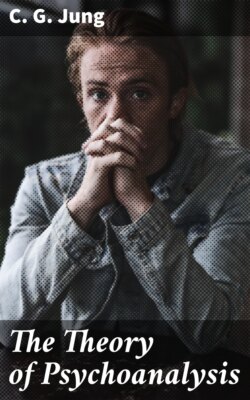Читать книгу The Theory of Psychoanalysis - C. G. Jung - Страница 6
На сайте Литреса книга снята с продажи.
The Traumatic Theory
ОглавлениеTable of Contents
So far as I know it was really Charcot who, probably under the influence of Page’s theory of nervous shock, made this observation of theoretical value. Charcot knew, by means of hypnotism, at that time not understood, that hysterical symptoms could be called forth by suggestion as well as made to disappear through suggestion. Charcot believed that he saw something like this in those cases of hysteria caused by accident, cases which became more and more frequent. The shock can be compared with hypnosis in Charcot’s sense. The emotion provoked by the shock causes a momentary complete paralysis of will-power, during which the remembrance of the trauma can be fixed as an auto-suggestion. This conception gives us the original theory of psychoanalysis. Etiological investigation had to prove whether this mechanism, or a similar one, was also to be found in those cases of hysteria which could not be called traumatic. This lack of knowledge of the etiology of hysteria was supplied by the discovery of Breuer and Freud. They proved that even in those ordinary cases of hysteria which cannot be said to be caused by shock the same trauma-element was to be found, and seemed to have an etiological value. It is natural that Freud, a pupil of Charcot, was inclined to suppose that this discovery in itself confirmed the ideas of Charcot. Accordingly the theory elaborated out of the experience of that period, mainly by Freud, received the imprint of a traumatic etiology. The name of trauma-theory is therefore justified; nevertheless this theory had also a new aspect. I am not here speaking of the truly admirable profoundness and precision of Freud’s analysis of symptoms, but of the relinquishing of the conception of auto-suggestion, which was the dynamic force in the original theory, and its substitution by a detailed exposure of the psychological and psycho-physical effects caused by the shock. The shock, the trauma, provokes a certain excitation which, under normal circumstances, finds a natural outlet (“abreagieren”). In hysteria it is only to a certain extent that the excitation does find a natural outlet; a partial retention takes place, the so-called blocking of the affect (“Affecteinklemmung”). This amount of excitation, which can be compared with an amount of potential energy, is transmuted by the mechanism of conversion into “physical” symptoms.
The Cathartic Method.—According to this conception, therapy had to find the means by which those retained emotions could be brought to a mode of expression, thereby setting free from the symptoms that amount of repressed and converted feeling. Hence this was called the cleansing, or cathartic method; its aim was to discharge the blocked emotions. From this it follows that analysis was then more or less closely concerned with the symptoms, that is to say, the symptoms were analyzed—the work of analysis began with the symptoms, a method abandoned to-day. The cathartic method, and the theory on which it is based, are, as you know, accepted by other colleagues, so far as they are interested at all in psychoanalysis, and you will find some appreciation and quotation of the theory, as well as of the method, in several text-books.
